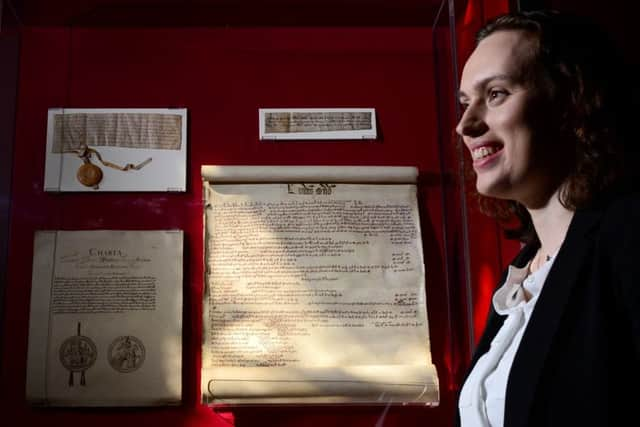William Wallace’s execution cost a year’s worth of wages as gory details revealed
Facsimile copies of letters and documents relating to the 13th-century patriot were commissioned as part of a £1.1 million restoration and refurbishment project at the attraction to mark its 150th anniversary this year. Among the star attractions that went on display for the first time when the tower reopened to the public on Friday is the English Exchequer Pipe Roll for 1305, which describes Wallace’s execution and sheds light on how he was regarded in England.
The document reveals how Wallace’s execution cost the sum of “61 shillings and ten pence”. The amount, worth around £2,150 in today’s money, was equivalent to almost a year’s wages for a skilled tradesman or the price of three horses in 1305.
Advertisement
Hide AdAdvertisement
Hide AdThe document also shows how Wallace’s trial was designed to demonstrate King Edward I’s power and act as a warning to other “rebels” who might challenge his authority.


The authors describe the Scottish hero as “a robber, a public traitor, and outlaw, an enemy of and rebel against the king, who falsely sought to call himself king of Scotland”.
They recount how Wallace “slew the king’s officials in Scotland and also led an army in hostility against the king”.
And in gory detail, they record Wallace’s gruesome death. The document states he was “drawn, hanged, beheaded, his entrails burned and his body quartered whose four parts were despatched to the four principal towns of Scotland”.
Other documents in the new display include the Lubeck Letter of 1297, written to the merchants of Lubeck in Germany by Wallace and Andrew de Moray to declare Scotland open for business following the Battle of Stirling Bridge. The so-called “Safe Conduct”, written in favour of Wallace by King Philip IV of France to his agents in Rome in 1300, is also on exhibit.
Ken Thomson, from Stirling District Tourism (SDT) that runs the historic attraction, said: “The English Exchequer records show us how much Wallace’s execution cost, but also let us see what the English authorities thought of Wallace.
“With so few documents surviving from that time, this facsimile copy is really important and it provides visitors with a much better understanding of how he was treated.” The National Wallace Monument was closed to the public for more than two months while a £550,000 refurbishment of its three internal galleries was carried out.
The new installations are intended to tell the story of Scotland’s national hero “better than ever before”.
Advertisement
Hide AdAdvertisement
Hide AdLyndsey Bowditch, a director of Edinburgh-based exhibition designers StudioArc, who took on the challenge of redeveloping the interiors, said the Pipe Roll copy could be the first of its kind ever made from the original kept at the National Archives in Kew.
She said: “In exploring what we actually know about Wallace, we commissioned a series of facsimiles — based on the actual documents, reproducing them as closely as possible to the originals.
“The English Exchequer’s Pipe Rolls were enormous documents, metres long, kept rolled up and literally stored in pipes.”